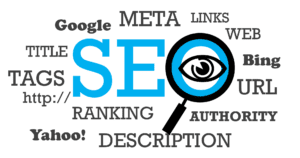Wearable watch technology dates back to the 16th century. German clockmakers took the mechanics of the clock and worked out how to shrink these down into portable form.
The metal parts within a watch are fragile and susceptible to damage from environmental factors like temperature, gravity, movement and shock. This meant that for centuries, watches were known to lose time or be easily damaged due to daily wear and tear.
All this changed in the 1960s when the quartz watch was invented. These timepieces use a battery-powered motor and a quartz crystal to keep time rather than a spring and oscillating balance wheel and are, therefore, far less delicate.
Quartz watches were so popular when introduced that it caused massive upheaval in the watchmaking industry, referred to as the quartz crisis.
Traditional watches
While quartz watches continue to be popular, you can now buy automatic watches too. These are a throwback to the original mechanical models, but the timekeeping is kept consistent with the kinaesthetic energy produced by the movement of the wearer.
Chronographs are a common choice for those who favor traditional watches. These combine a clockface and a stopwatch function to cover all of your timekeeping needs without any extra features.
They are so accurate across the boards that they’re trusted accessories for pilots, doctors, and other professionals who require precise timekeeping under enormous pressure.
Stick to tradition with simple leather-strap models from Breitling or browse Hublot watches that are deliberately contemporary with chunky faces and bright metal or resistant rubber straps.
Smartwatches and fitness trackers
Over the last two decades, the watch has evolved even further thanks to the introduction of digital technology. Telling the time is almost a secondary function with smartwatches!
Using Bluetooth and data, your watch can connect to your smartphone for instant notifications of calls and messages. Beyond that, you have GPS navigation, microphones, apps, and entertainment.
Some of the most popular smartwatches on the market are fitness trackers. These designs are dedicated to monitoring physical activity and health to help the wearer optimize their well-being.
These features include heart rate and blood pressure monitors, skin temperature and skin sensors and motion trackers that can count steps and calculate how many calories you burn during exercise.
You can even find special edition smartwatches that are designed to enhance particular pastimes. A prime example is the Golf Edition Men’s Connect Calibre E4 Smartwatch by TAG Heuer. The watch contains 2D maps of over 40,000 courses around the world and can even give you tips on how to improve your swing.
Featured Image by ErikaWittlieb from Pixabay




